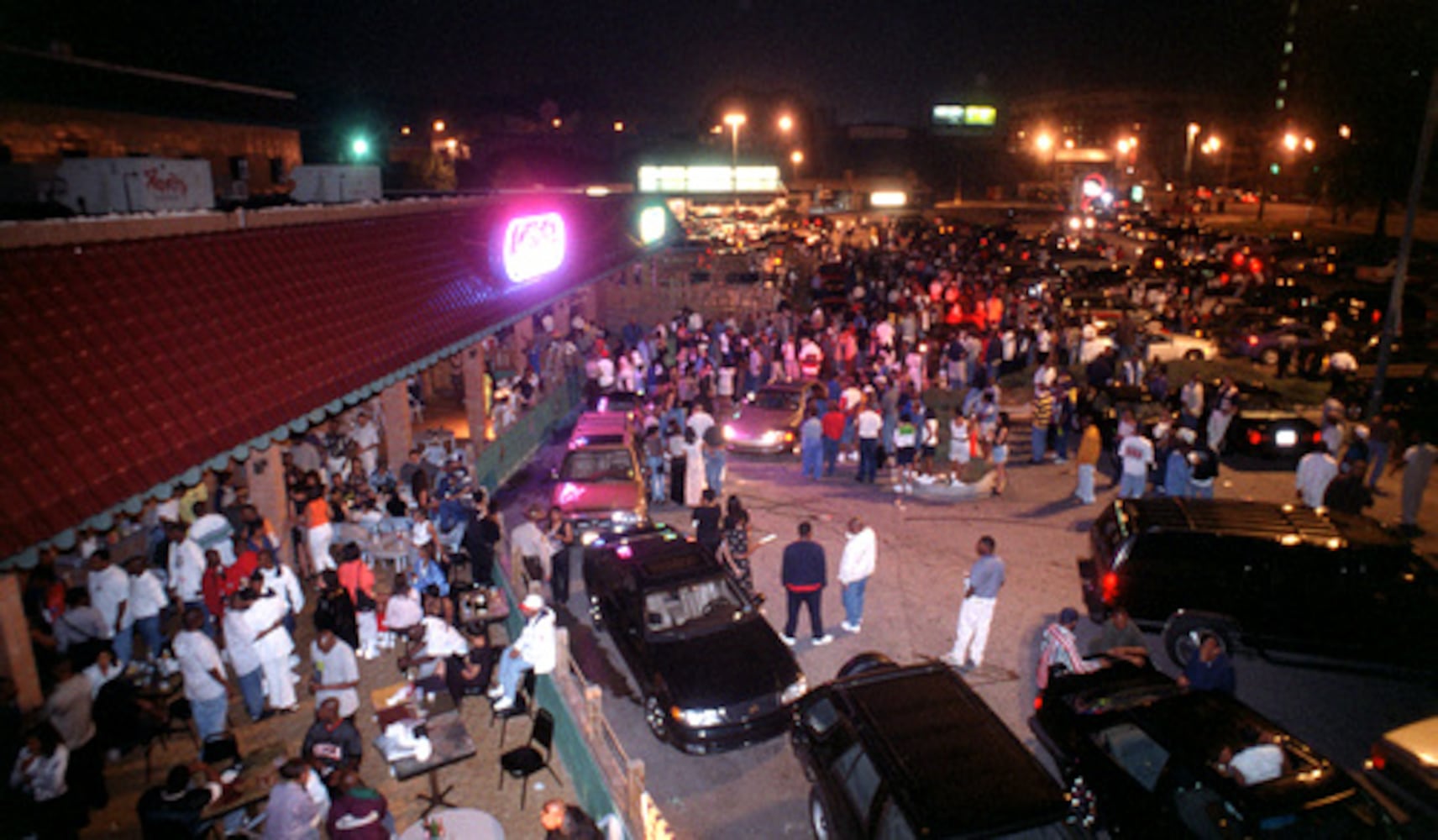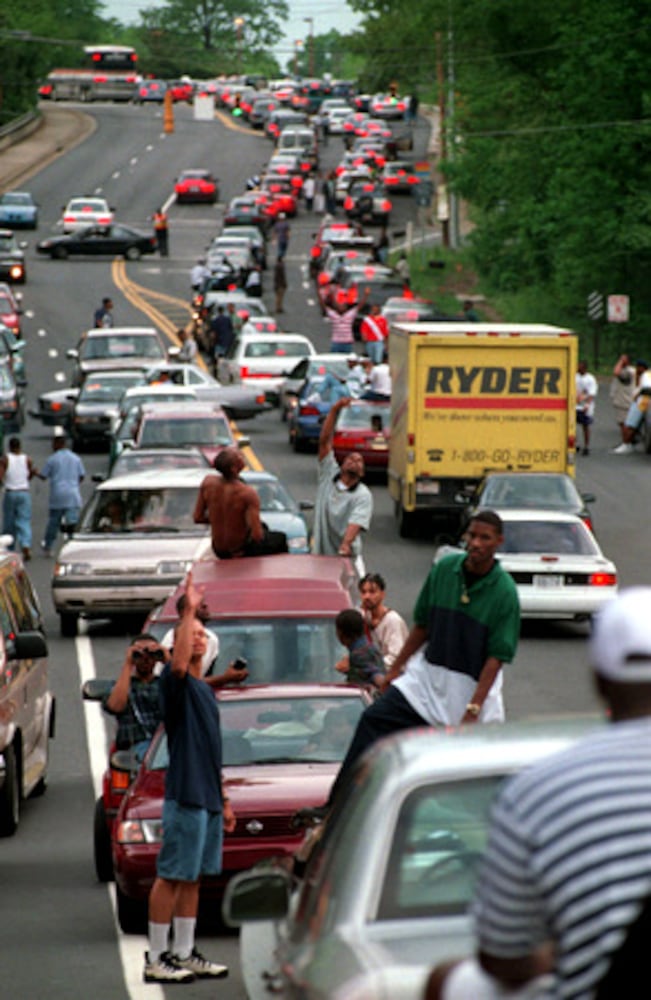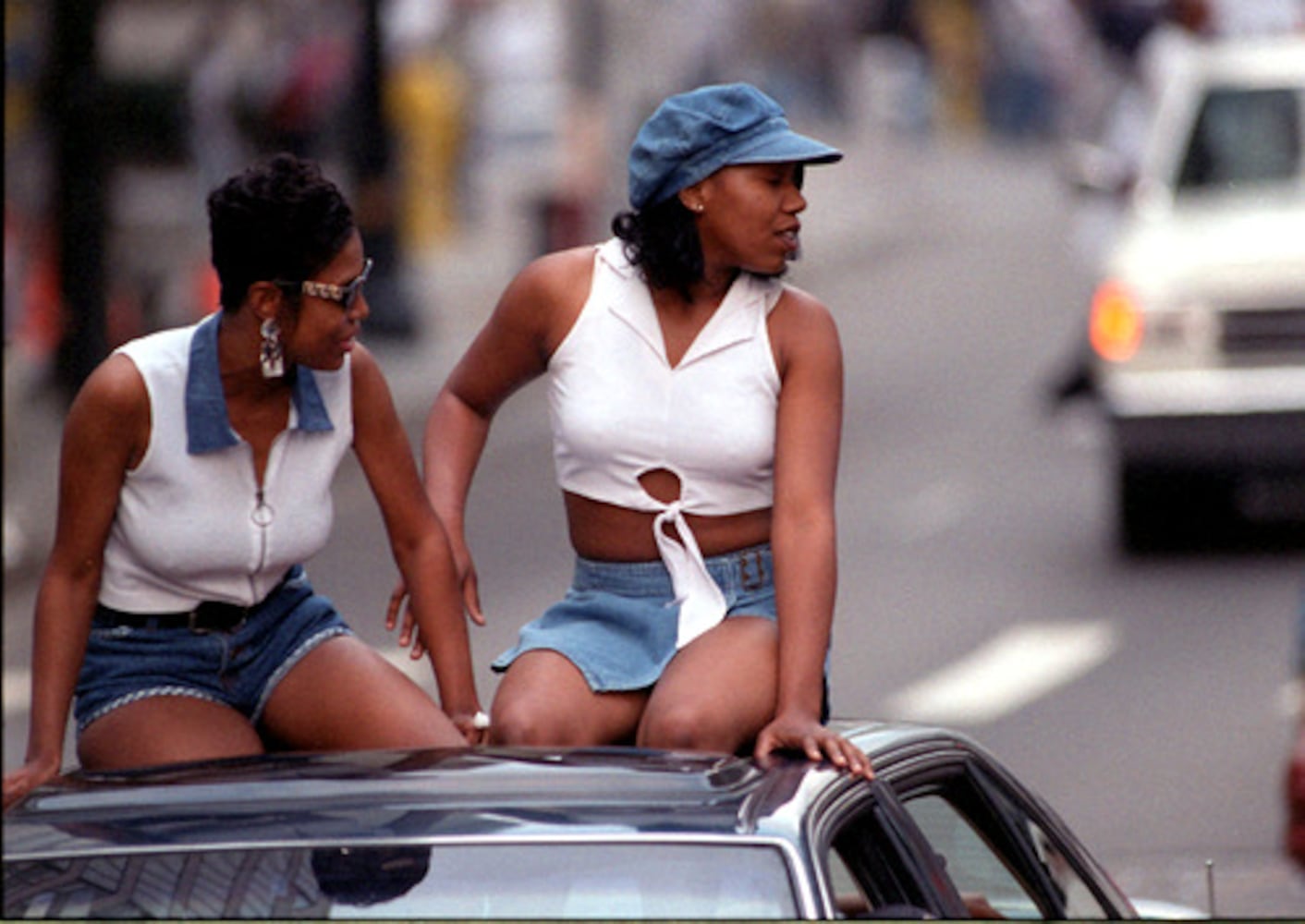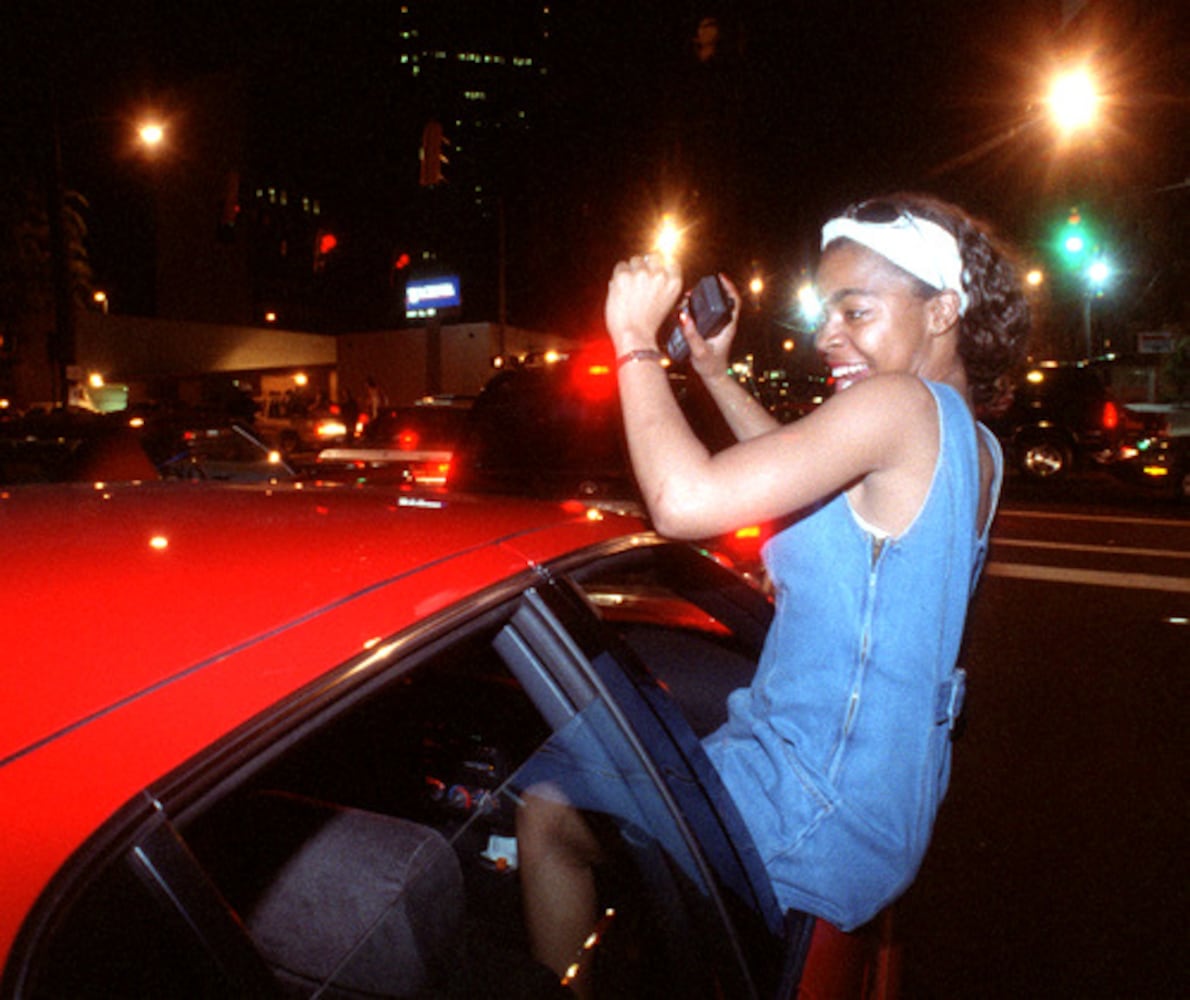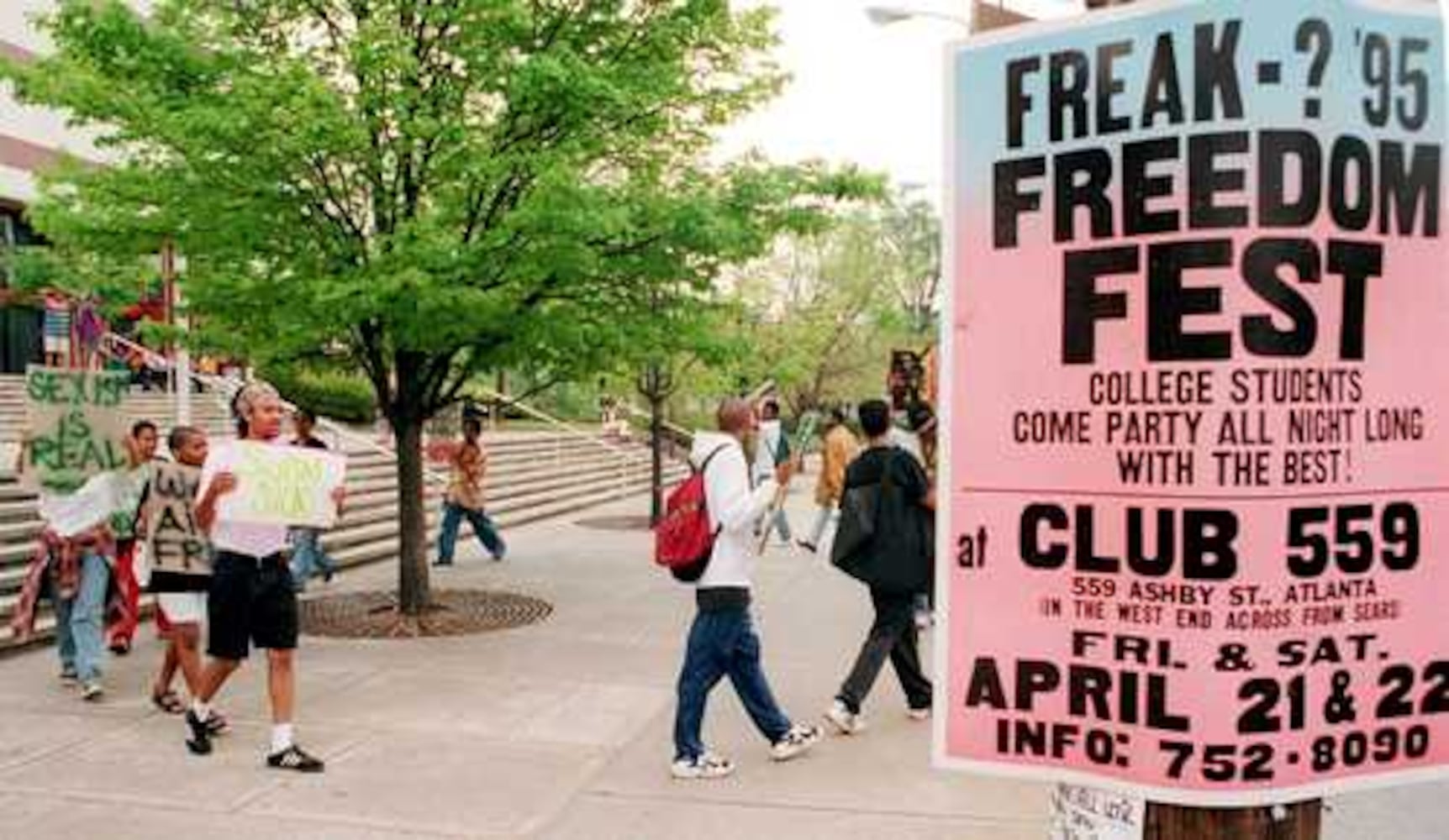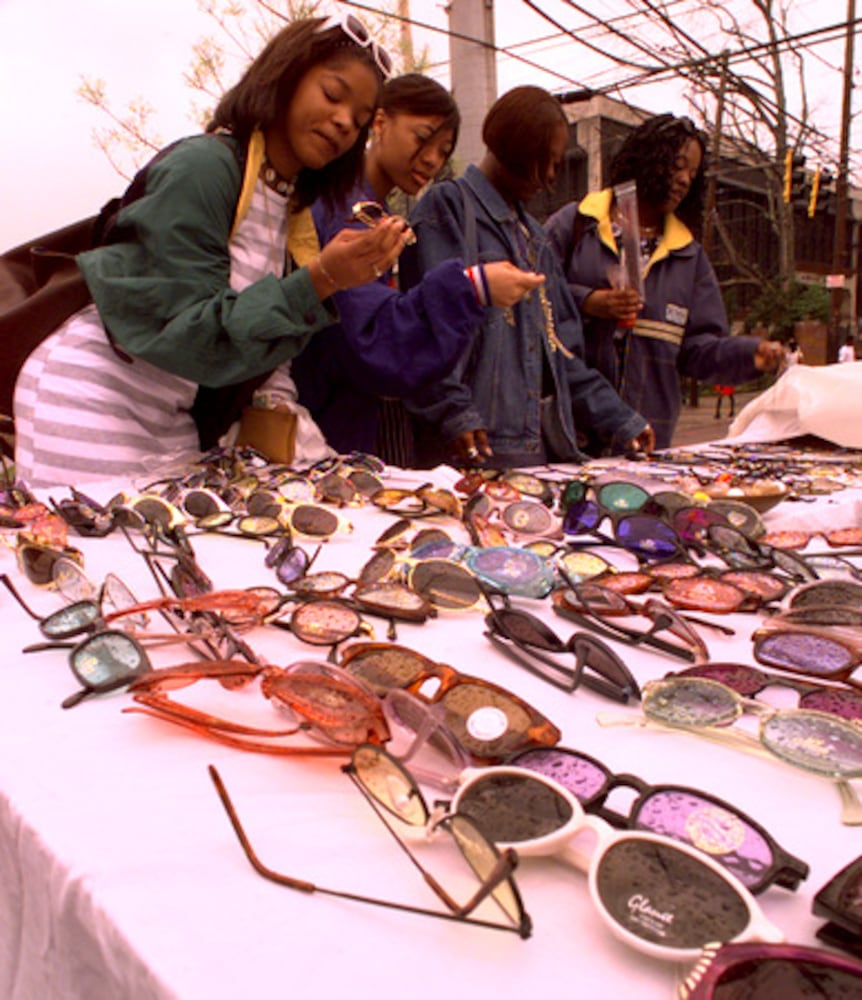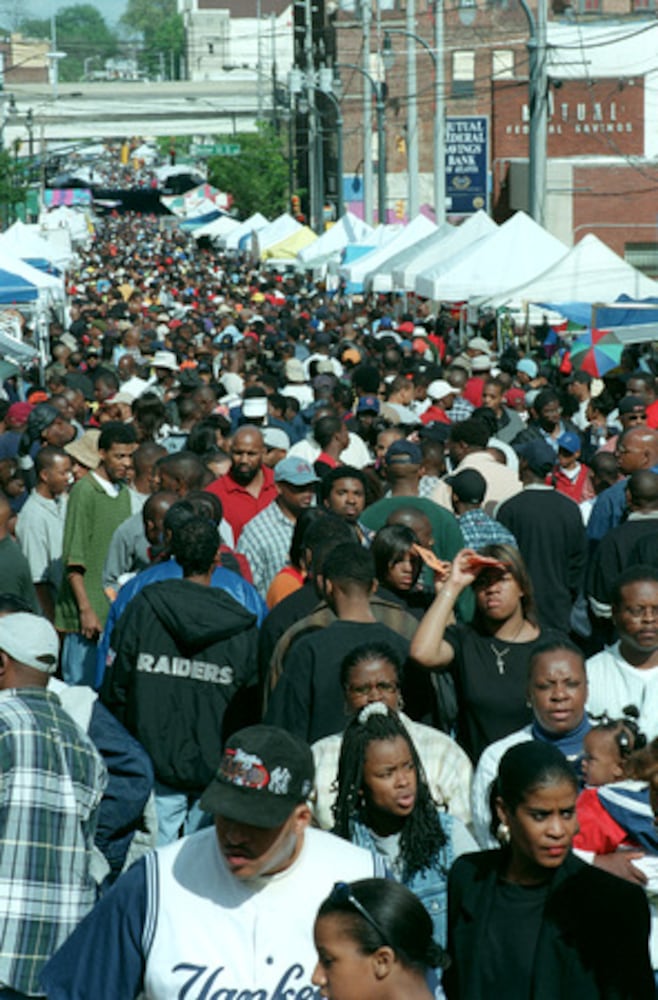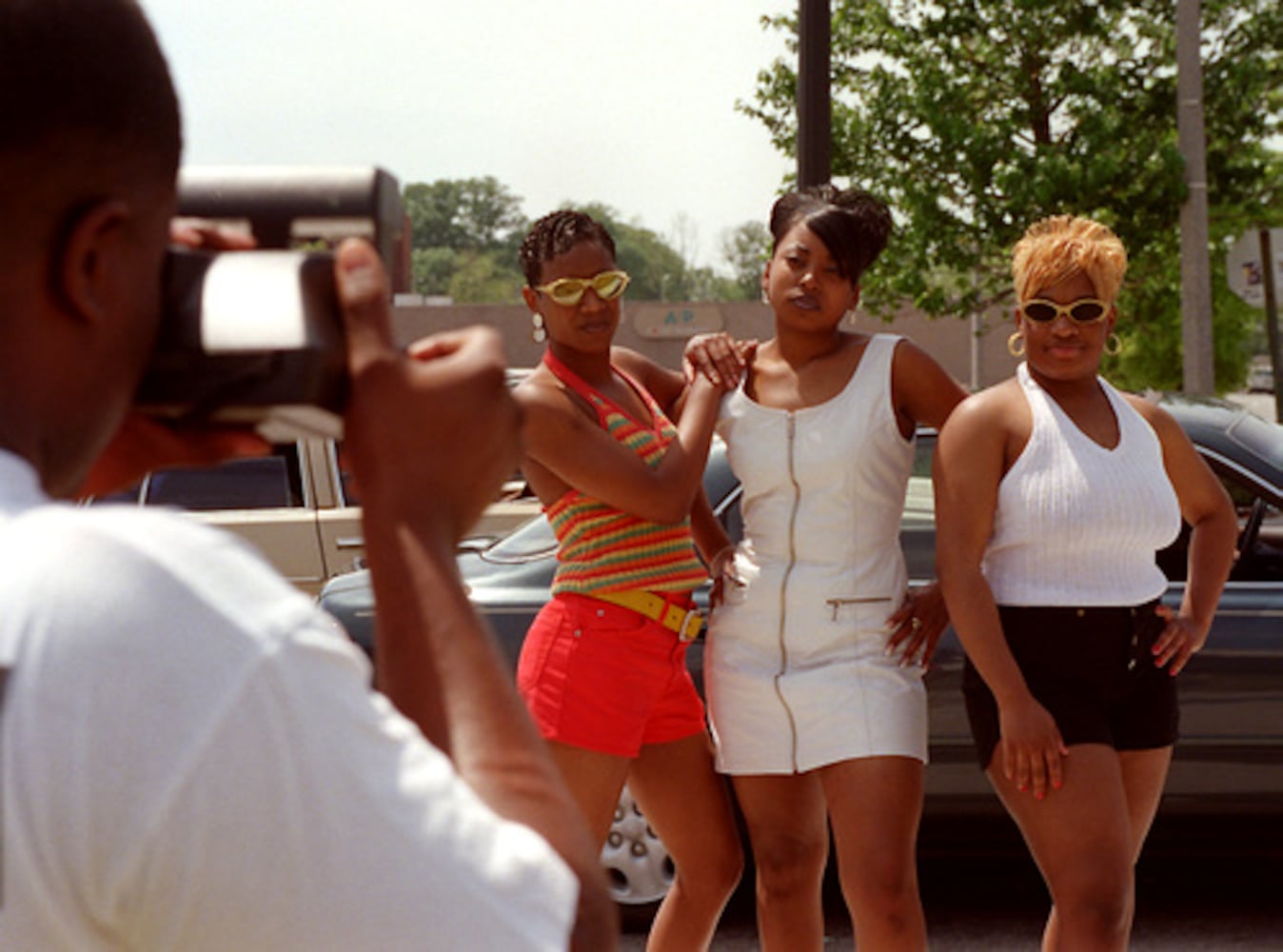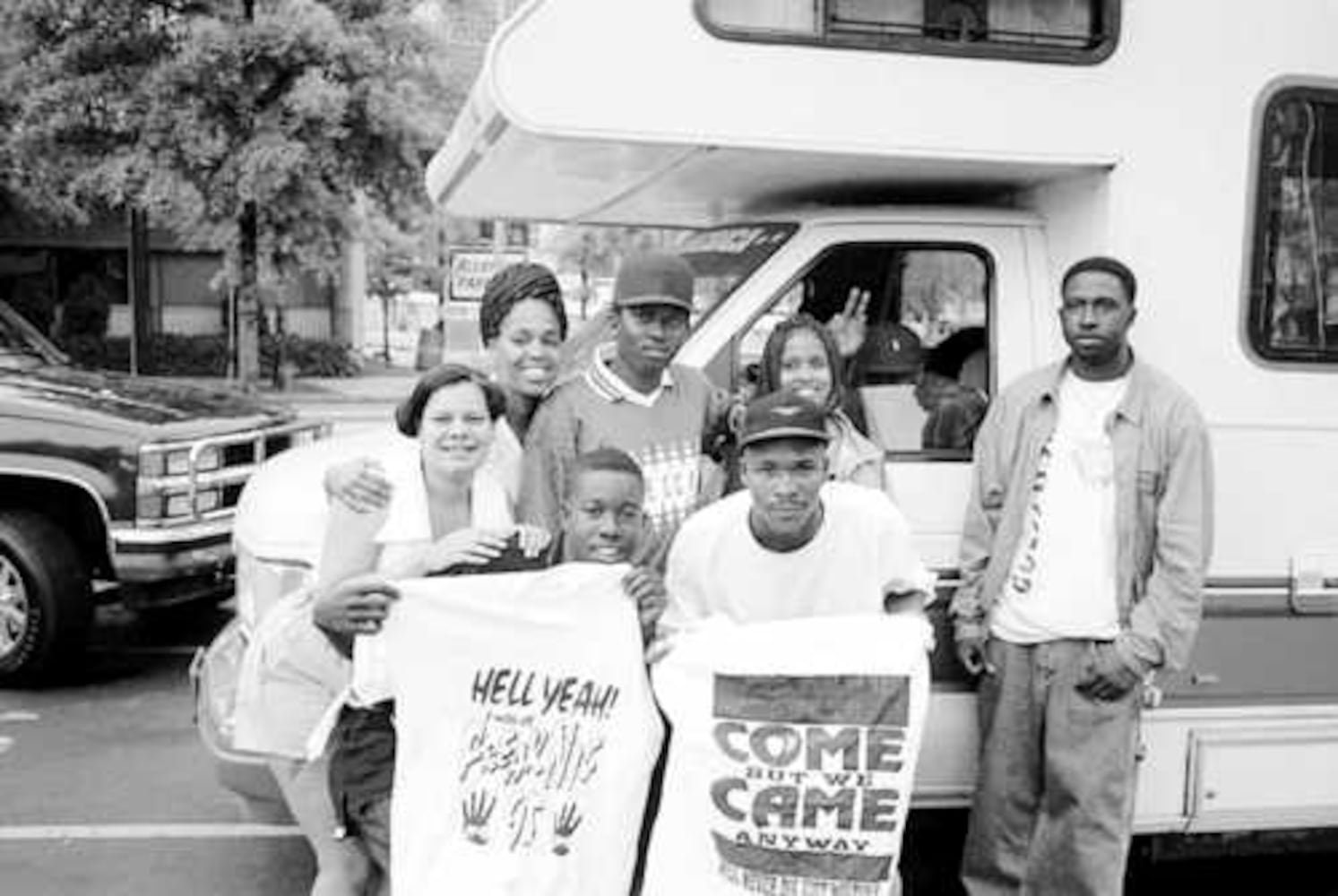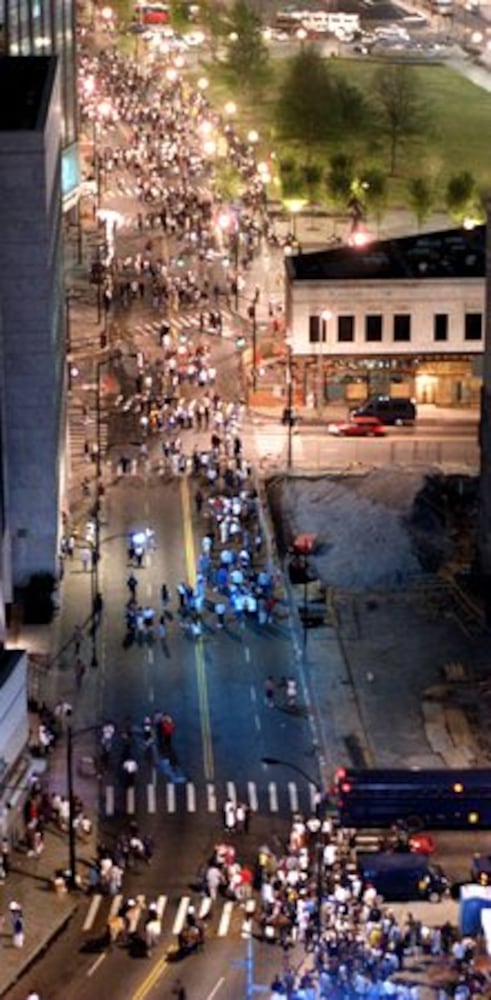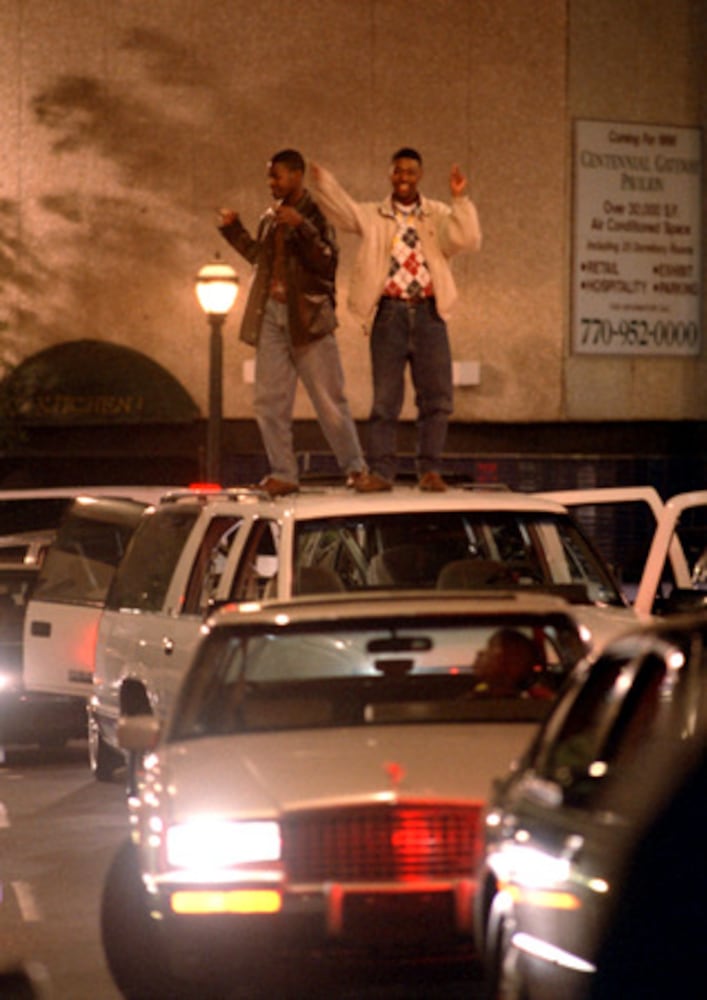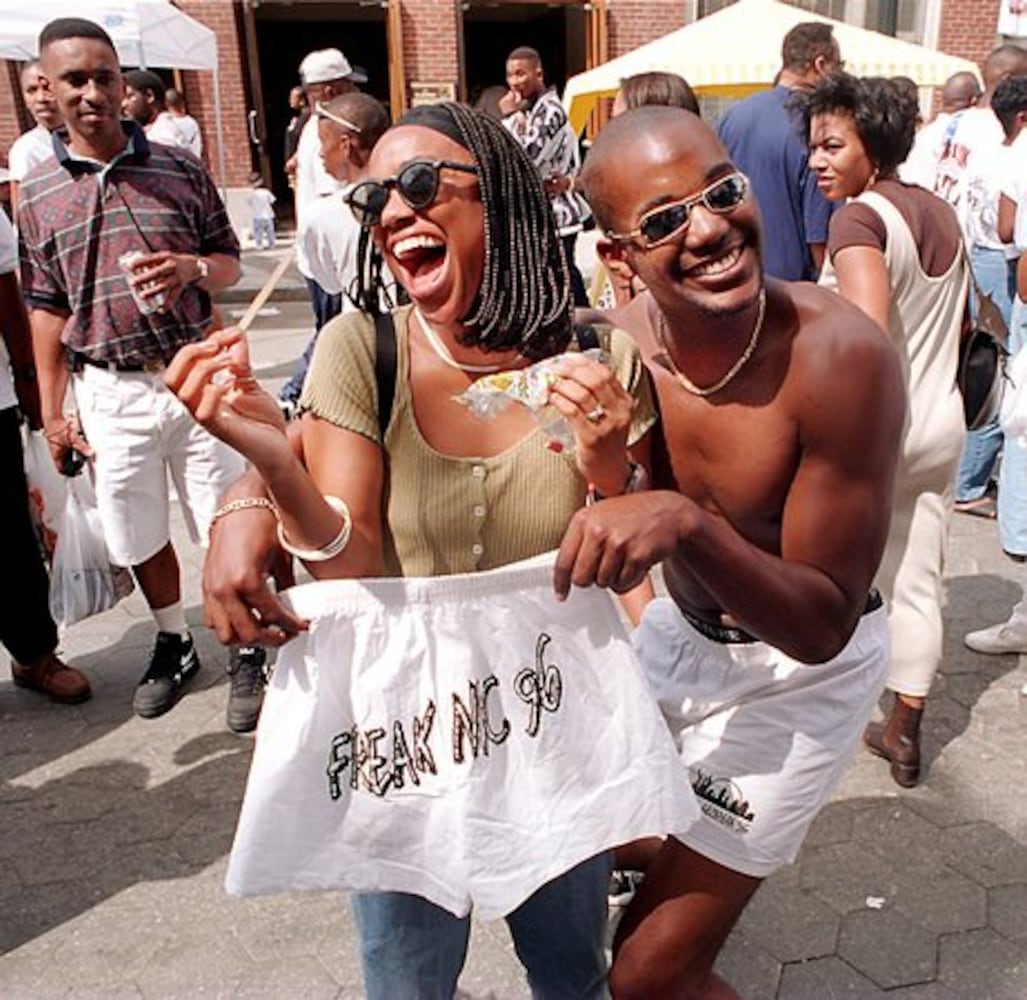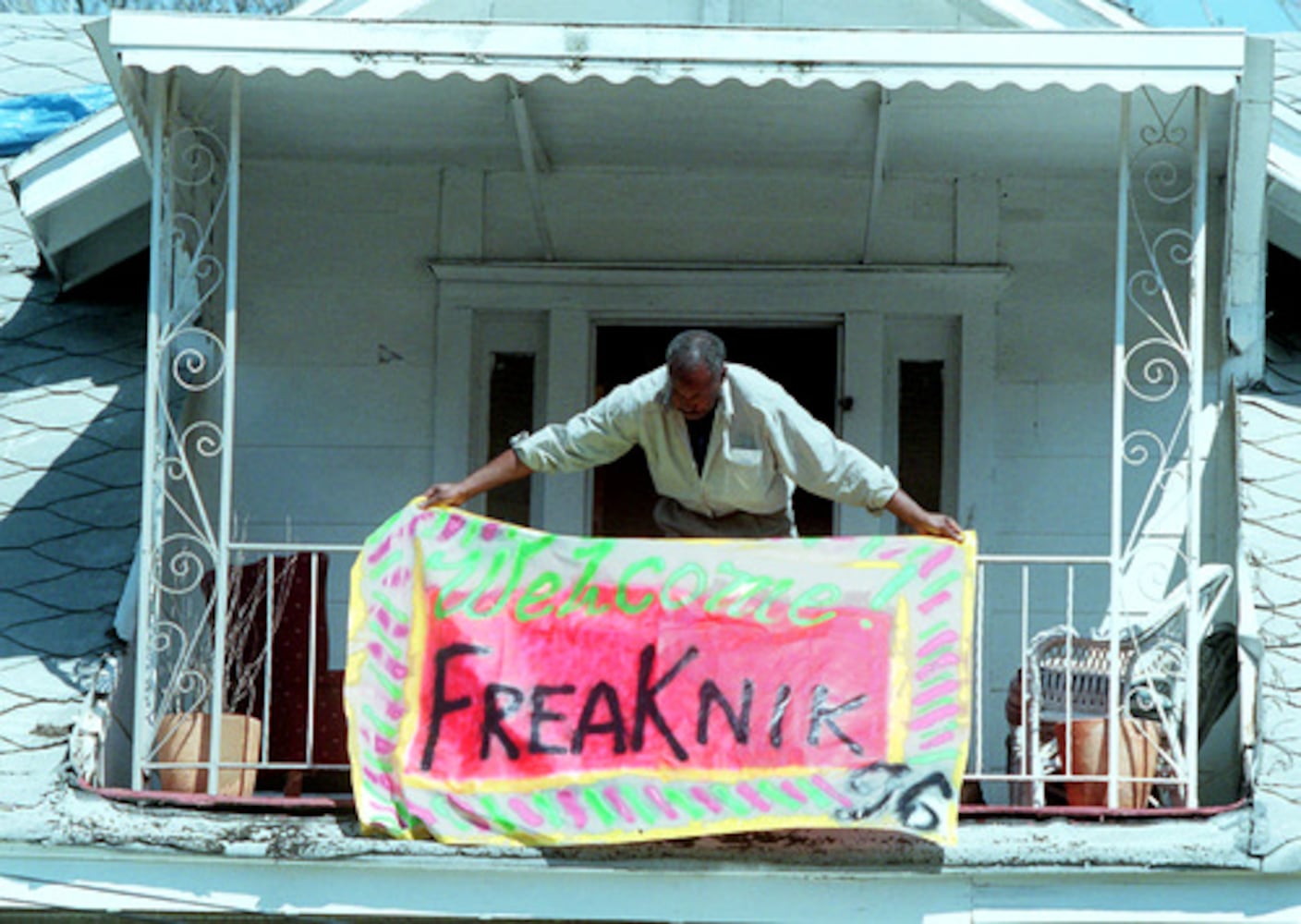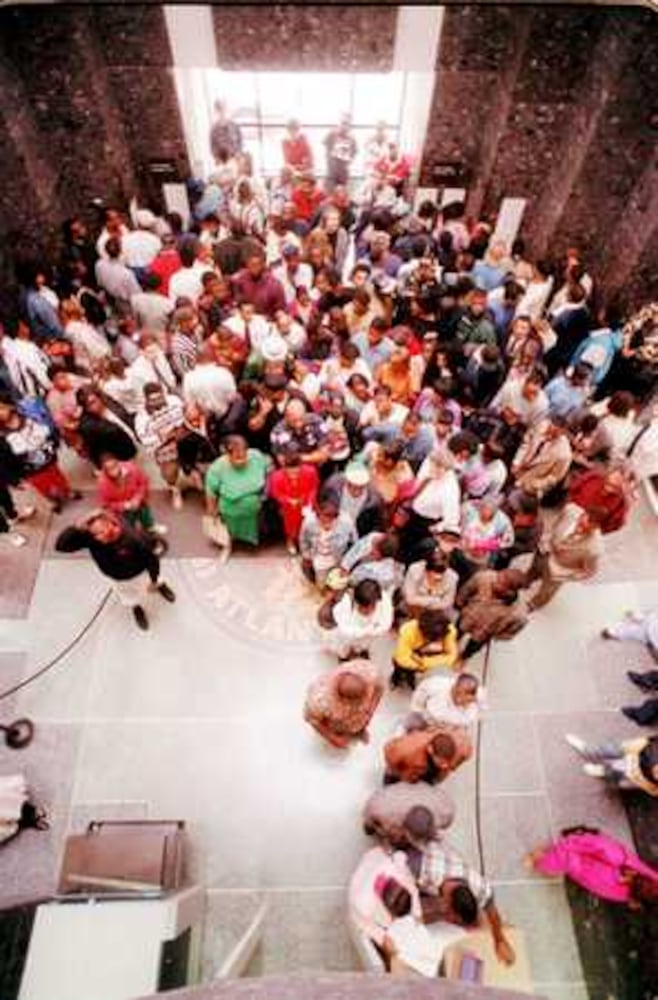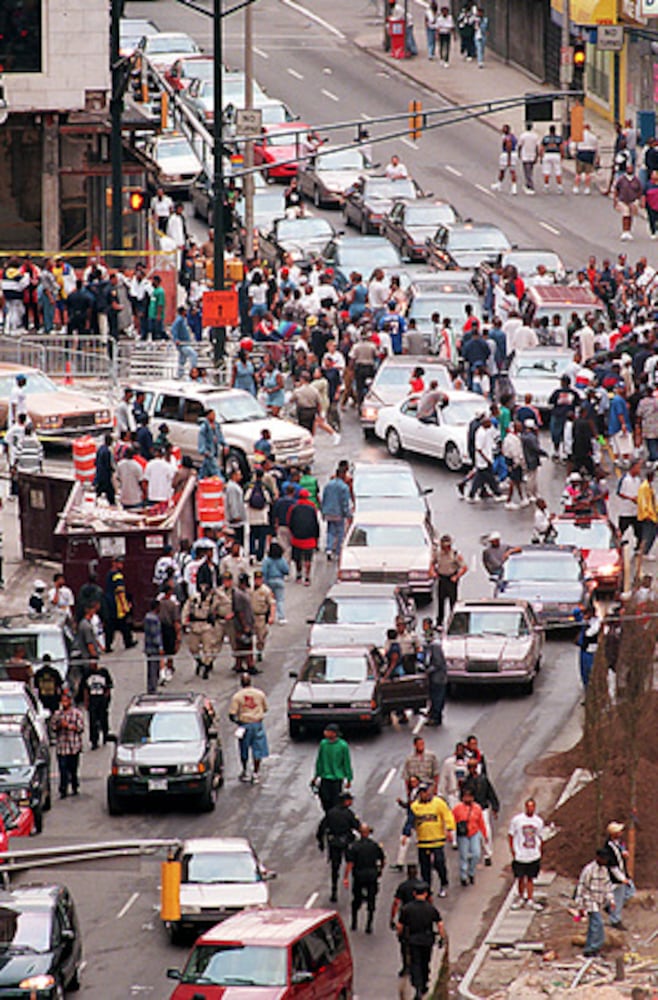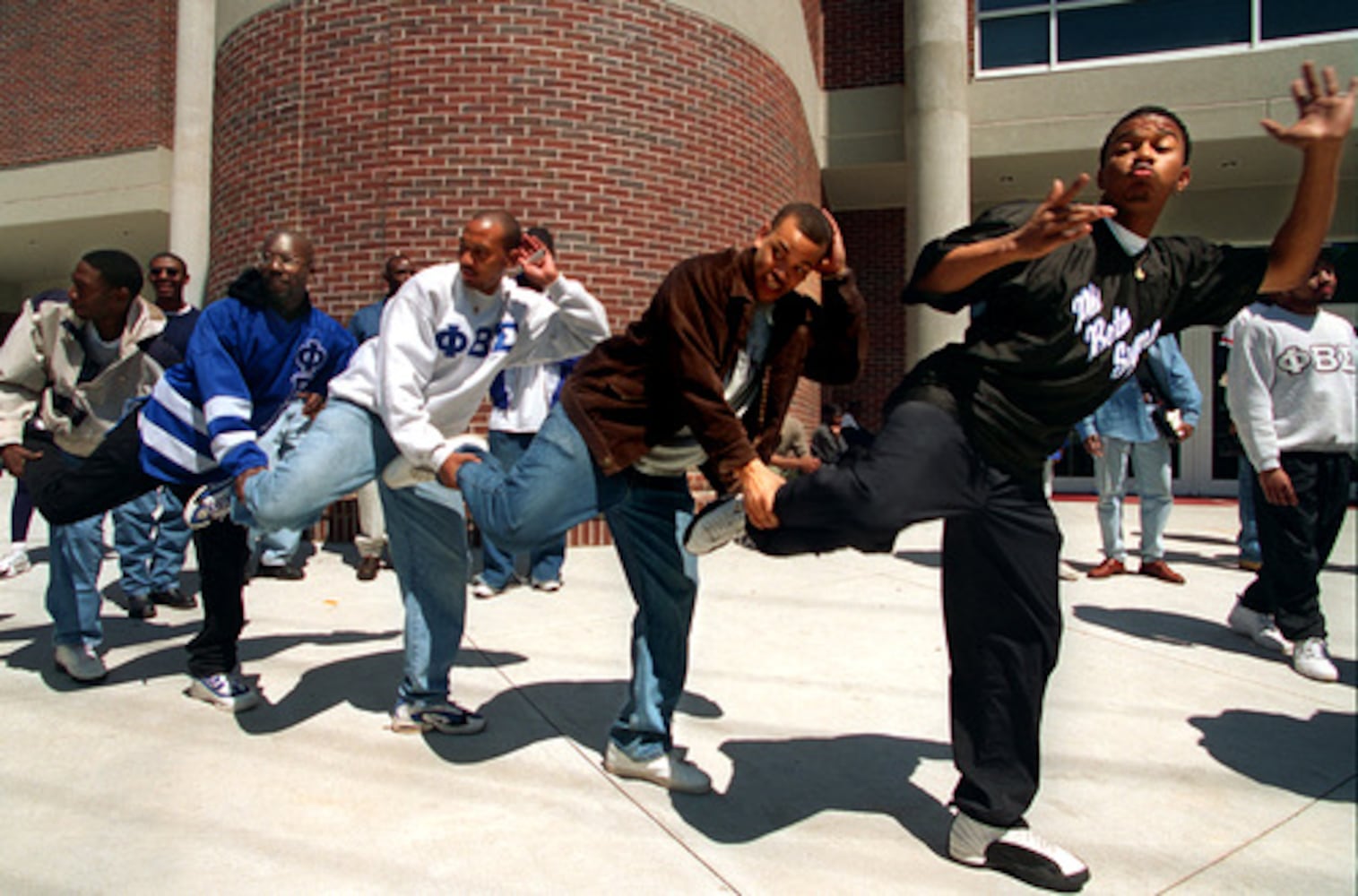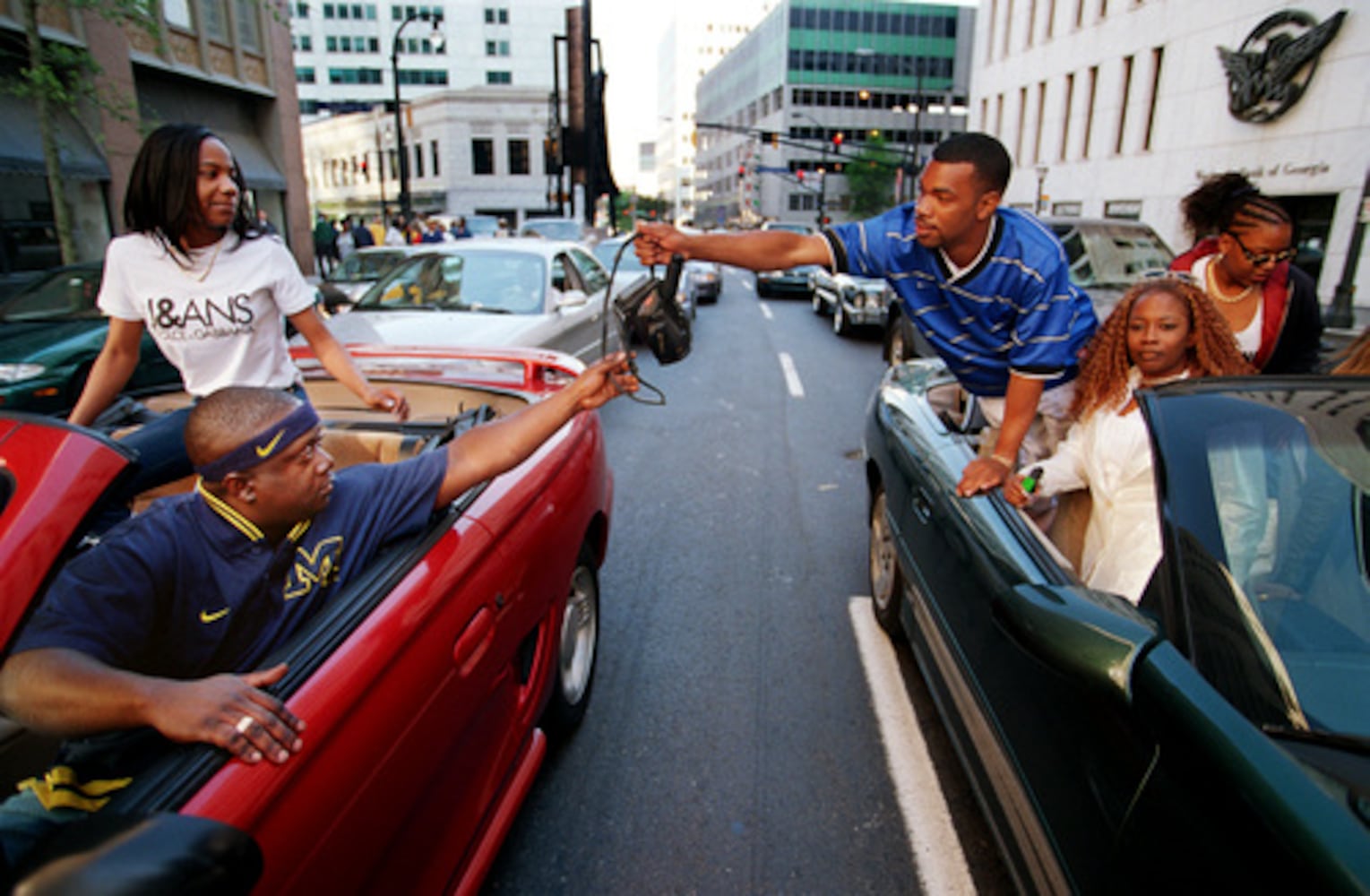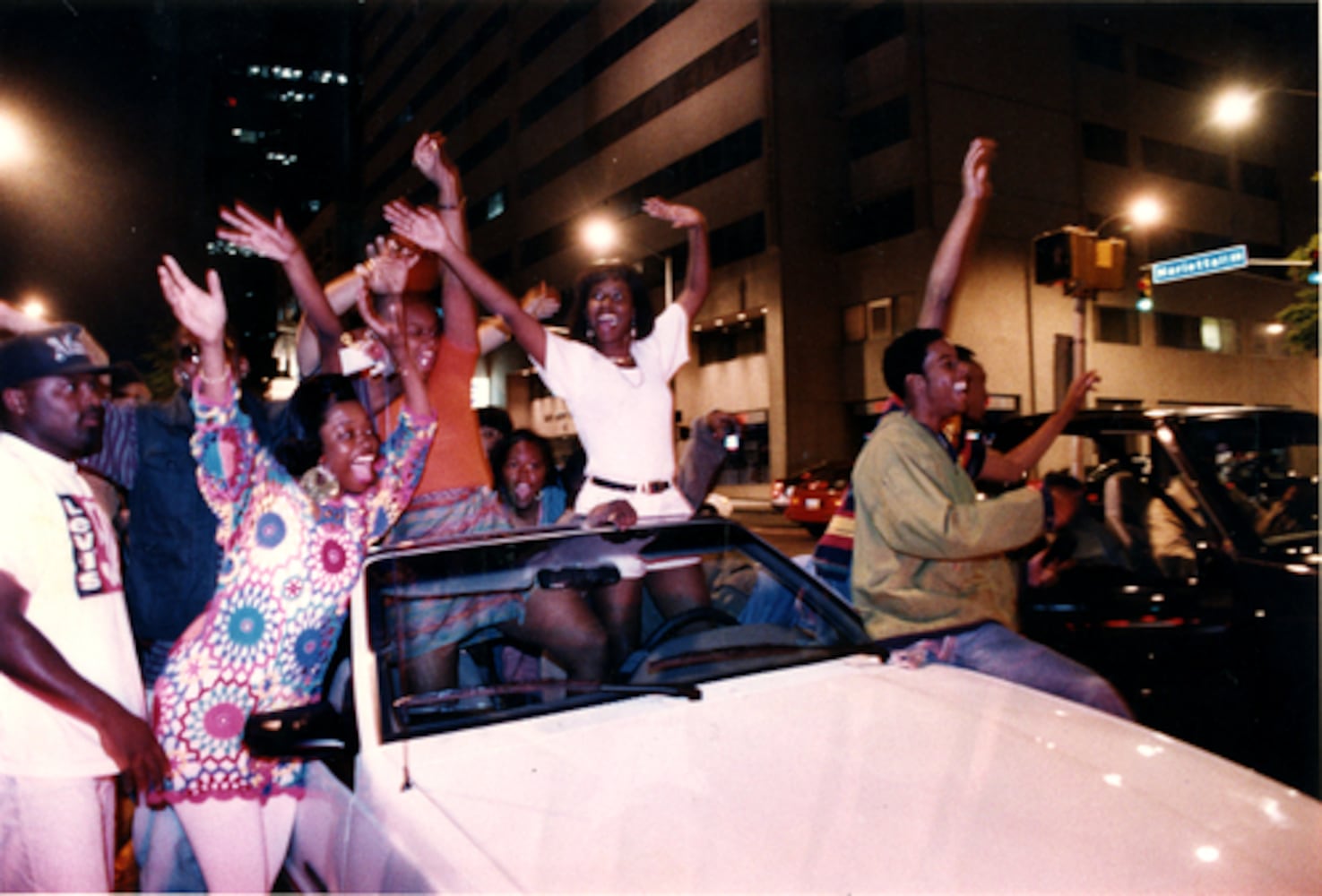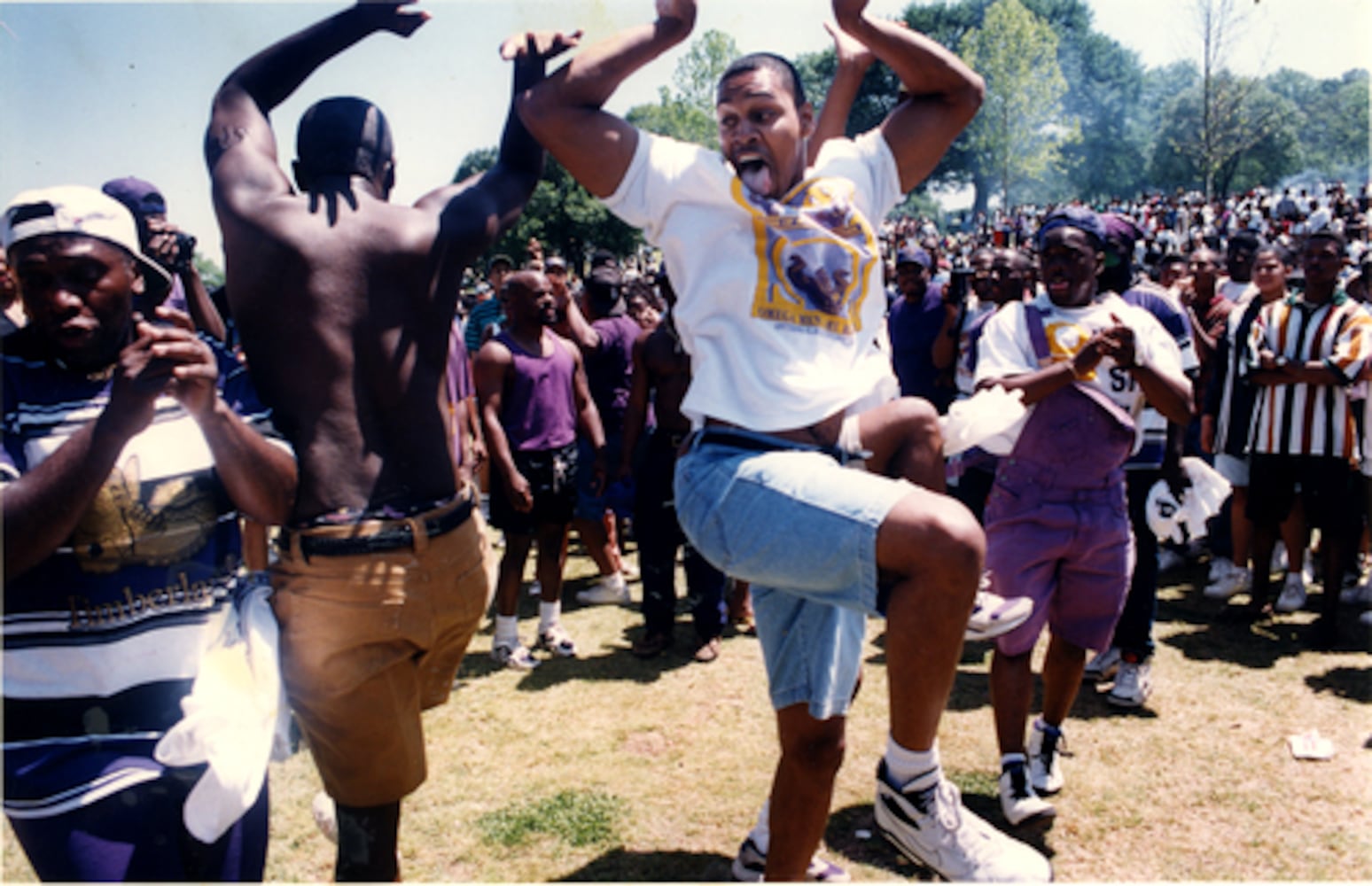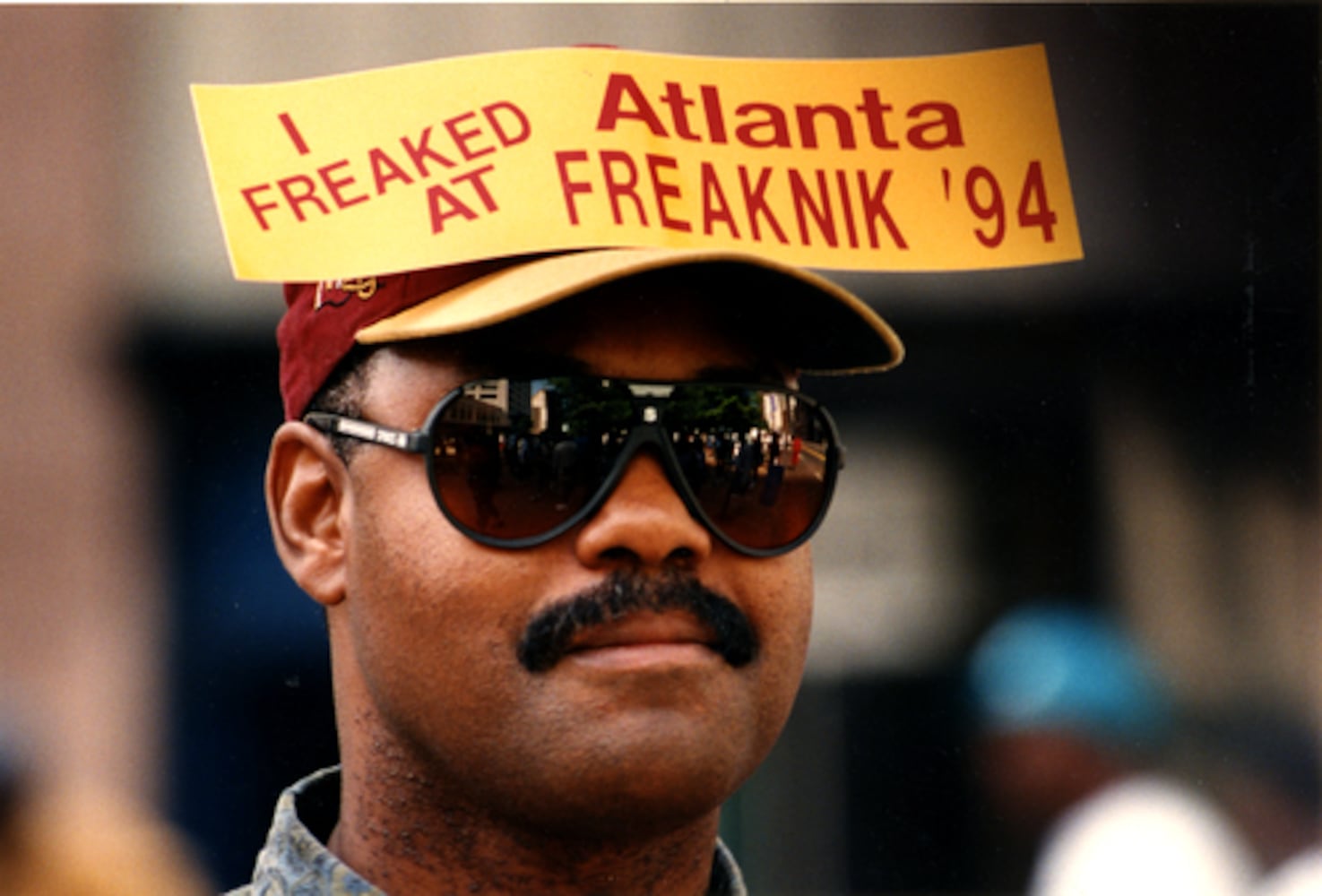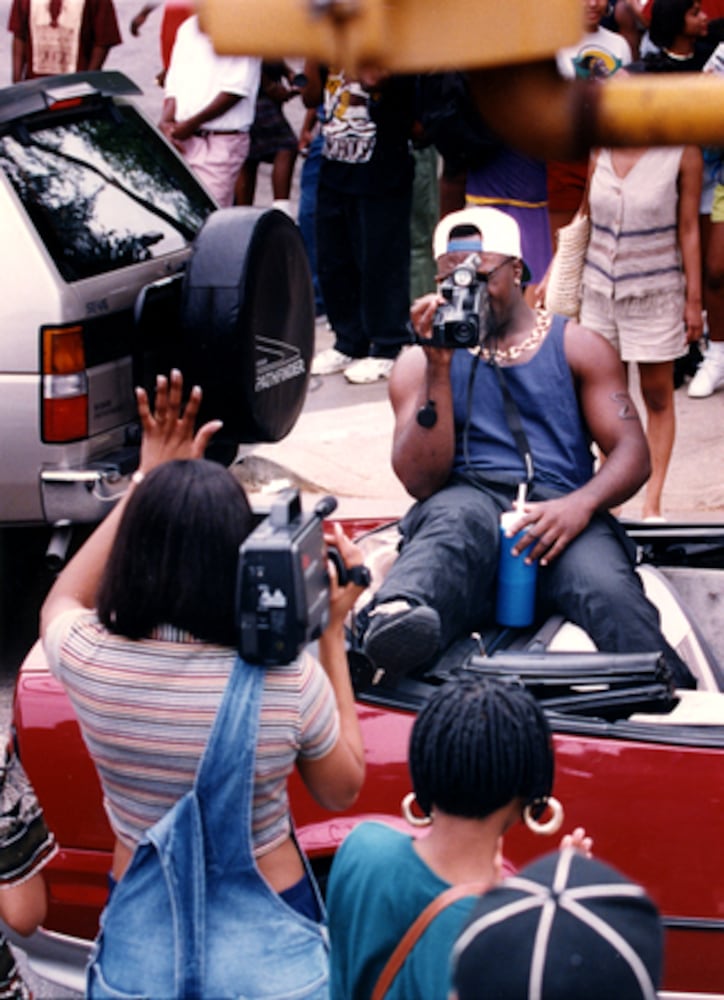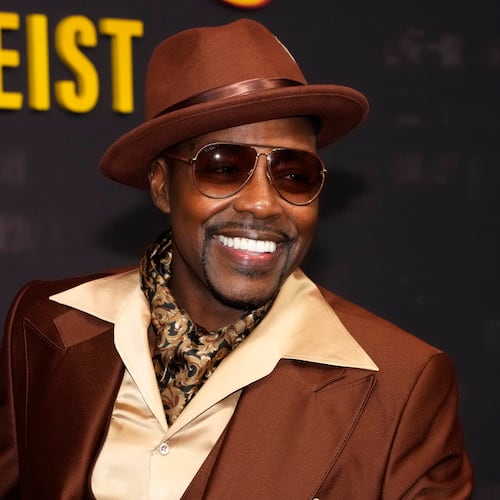Freaknik, three decades removed from its peak years, has become a cultural touchstone of a particular period of Atlanta history, both good and bad.
Through the gauzy pastiche of nostalgia, it’s currently the backdrop of two current TV shows: season three of Starz’s “BMF” about the infamous drug ring that infiltrated Atlanta in the 1990s and BET+’s “Perimeter,” a fictional drama set in 1992 leading up to that year’s Freaknik.
And now Hulu is exploring Freaknik’s entire history in a two-hour documentary dubbed “Freaknik: The Wildest Party Never Told,” out Thursday, March 21.
The executive producers, including legendary producer Jermaine Dupri, provocative Miami rap star Luke Campbell and current Atlanta hip-hop performer 21 Savage, cover all the bases, from Freaknik’s humble beginnings to its peak popularity to its collapse.
“There were way more layers than I thought when I was a 21, 22-year-old kid just trying to party,” said P. Frank Williams, an executive producer who attended Freaknik in the 1990s.
Expert voices range from academics like Marc Lamont Hill and Maurice Hobson to artists like CeeLo Green, Rasheeda Frost and Lil Jon to former Atlanta mayor Kasim Reed. (Fellow former mayor Bill Campbell, who presided over the city during the height of Freaknik, is only seen in a few vintage news clips.)
“Freaknik really started the evolution of Atlanta being this hub of fashion, of music, of this culture of beautiful Blackness,” Frost said in the doc.
Here are five major points gleaned from the documentary:
The origins of Freaknik were modest and positive: The documentarians were able to gather the key originators of Freaknik from the 1980s to discuss how it all started as a modest picnic gathering of students from historically Black colleges on spring break in Piedmont Park. The name, originally Freaknic, was taken from Chic’s disco-era hit song “Le Freak.”
“Many people couldn’t afford to go home,” said Monique Tolliver, one of the creators, in the doc. “I was one of them. I decided, hey, we are all here. Let’s do something.”
The doc shows plenty of grainy 1980s-era video and faded photos of students chilling out and having a good time.
Then year by year, Freaknik became more popular, fueled by word of mouth and pop culture. In 1988, Morehouse College alum Spike Lee’s “School Daze” gave HBCUs a spotlight to the masses. Then in 1989, an entire episode of the popular NBC sitcom “A Different World” revolved around students wanting to go to Freaknik.
“It was organic,” Reed said in the doc, “and that’s why I think it grew and took off and became an event.”
Credit: JEAN SHIFRIN
Credit: JEAN SHIFRIN
Camcorders gone wild: Freaknik happened long before smartphones and social media. But plenty of dudes carried big camcorders to record the action, shown to tens of people, then stored in attics and basements for decades. “The camcorder was the star of Freaknik,” said Campbell in an interview with The Atlanta Journal-Constitution.
Dupri told the AJC the producers sent a callout on Instagram for 1990s-era Freaknik videos and received no shortage of dusty VHS tapes, which they converted to digital. The result was a doc packed with so many random women dancing on top of cars that you’ll be reminded of a certain Sir Mix-a-Lot video.
Many of the voices in the doc called this a way for women to express their sexuality more openly without guilt or shame.
And notably, the producers didn’t blur any faces.
“Every video was approved by the person who gave it to us,” said producer Nikki Byles, who came up with the documentary idea at Atlanta-based Swirl Films with Jay Allen. “Everyone in there is collateral damage.”
Credit: Arista; LaFace
Credit: Arista; LaFace
Freaknik gave Atlanta hip-hop a massive boost: Besides the fashion and the vehicles of the day, Freaknik also highlighted the music and early rise of the hip-hop scene in Atlanta. In the early 1990s, New York and Los Angeles dominated the rap world. “Freaknik helped loosen that up,” said music executive Legendary Jerry in the doc.
Dupri was a key point person at that time, discovering the likes of Da Brat, Kris Kross and Xscape through his label So So Def Recordings.
“Jermaine Dupri is like the Dr. Dre of Atlanta, the Diddy of Atlanta,” said 21 Savage in the doc.
The doc dug up grainy video of OutKast performing at Freaknik. In 1994, OutKast’s label LaFace Records handed out cassette samplers of their debut album, “Southernplayalisticadillacmuzik,” on the streets during Freaknik. That move spread buzz about the burgeoning group nationwide and gave them credibility.
“Freaknik was an opportunity for us to do hand-to-hand distribution we had never been able to do before,” said Shanti Das, promotions director for LaFace Records at the time. “You could ride down the street and every car was bumping our cassette we had passed out. It was a marketer’s dream.”
The party went south from 1994 to 1999: By 1994, Freaknik had mushroomed into a city-wide spring-break party with traffic jams and debauchery galore, fueled in part by musicians like Luke Campbell of 2 Live Crew fame.
In the meantime, the city officials, well aware of the rising complaints and negative press coverage, decided to tamp down Freaknik as the pending Olympics approached. During Freaknik 1996, the city deliberately choked off so many roads that partygoers often felt trapped. The party vibe felt more like a police state.
“The nature of Freaknik changed,” Reed said.
Toward the end of the documentary, the darker side of Freaknik emerges with Stacy Lloyd recounting how she was robbed and sexually assaulted in 1998. By then, Freaknik was no longer just a college party and most of those arrested for crimes were not in college.
“Once I saw definitively the degradation of women, I had reached my fill with Freaknik and there was no coming back from that,” said Sharon Toomer, one of the original creators of the party, during the documentary.
By 2000, Freaknik was officially dead.
Credit: FACEBOOK
Credit: FACEBOOK
The legacy of Freaknik remains strong: The doc opens with video of a 21 Savage birthday party themed around Freaknik in 2022 at Underground Atlanta.
“It really had that ‘90s vibe with Suzuki Samurais circling the block and everyone in ‘90s attire,” said producer Jay Allen.
But while party promoters over the years have tried to bring back the party elements of Freaknik, Allen said “you can never bring back Freaknik itself.”
“There is nostalgia about Freaknik because it started in such a good place,” said Kathleen Bertrand, who recently retired from the Atlanta Convention & Visitors Bureau, in the doc. “It started with a pure intent. But there were some vile things that happened. That is part of the legacy.”
HOW TO WATCH
“Freaknik: The Wildest Party Never Told,” on Hulu starting Thursday, March 21
About the Author
Keep Reading
The Latest
Featured
